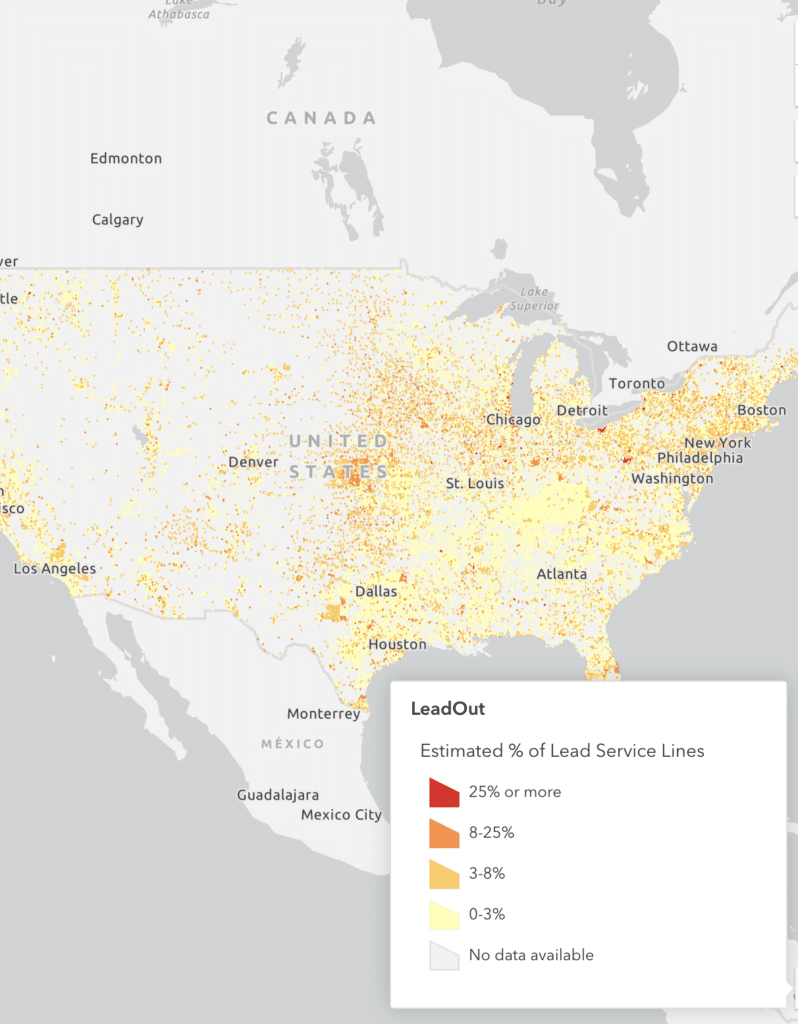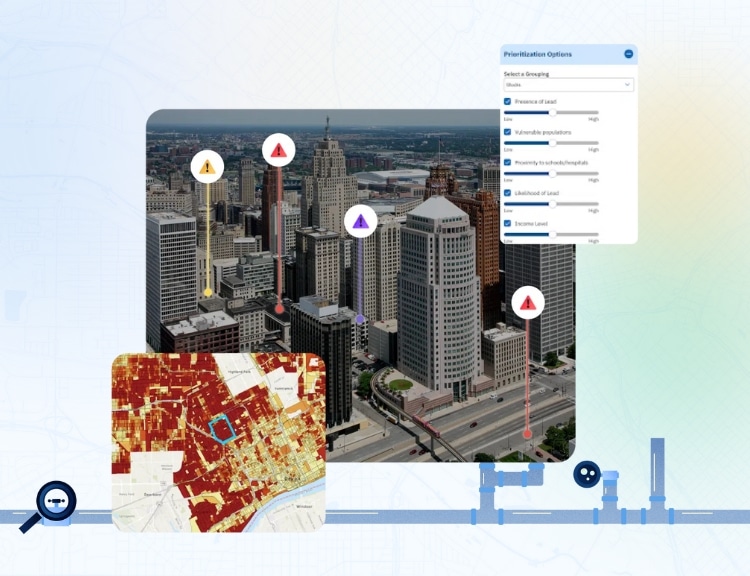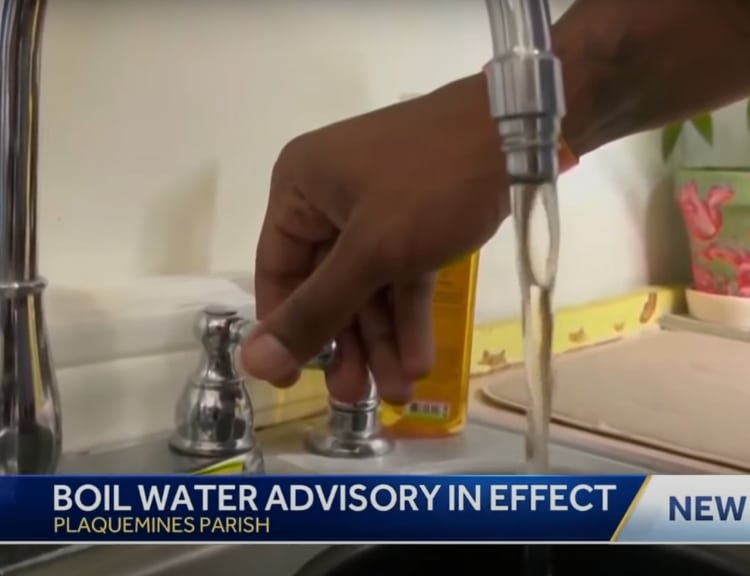Educational tool uses predictive modeling and artificial intelligence to help communities attract resources to locate and replace lead pipes more efficiently and equitably
Ann Arbor, MI, August 26, 2024 – Today, water infrastructure analytics company BlueConduit, with support from Google.org and The Rockefeller Foundation, announced the launch of LeadOut Map. It is the first and only educational tool that provides the most complete picture of lead in drinking water, including estimates of where lead pipes may lie.
The largest source of lead in U.S. drinking water is the underground pipes connecting our homes to our local water systems. The EPA estimates that there are more than 9 million lead service lines serving water to our communities. And yet, many water utilities and municipalities do not have complete records of these lead pipes’ locations. The practice of locating and replacing all lead service lines is in its infancy, with water systems now required to provide inventories of lead service lines to the U.S. EPA by October, and replacement projects expected to take at least a decade to complete.
As cities were built in the 19th and early 20th centuries, lead water pipes were used because of their durability. We now understand that lead is toxic and use safer materials. However, lead may still exist in the buried service lines that connect our homes to the water mains under our streets.
“There simply are huge gaps in knowledge about where lead service lines exist across the country. Their locations should not be a mystery, and too often they are – even to water system operators themselves – because of poor historical data,” said BlueConduit Co-founder Eric Schwartz. “Their challenge is further compounded because operators inherited a buried infrastructure of mixed-material pipes, often including lead. The LeadOut Map can give them a picture of where they may lie, which is a first, important step in replacing them as efficiently as possible.”
LeadOut Map uses machine learning technology to create estimates based on wide-ranging national and local data, including water system reports, census and real estate data, historical records, and more. Early results show that underserved communities in every state are the ones most at risk of having larger quantities of lead pipes. LeadOut Map’s predictive modeling and artificial intelligence can help identify geographic areas of top concern, which can support communities’ funding requests for lead pipe replacement projects as the U.S. government marshals resources and operators and municipalities begin the effort to get 100 percent of lead service lines removed across the country.
With funding from The Rockefeller Foundation and Google.org, the company collected data and designed the LeadOut Map technology using public, open-source data. A team of Google employees—researchers, designers, product managers, and software engineers—worked with BlueConduit on a full-time, pro bono basis to help build the tool through the Google.org Fellowship program.
“AI holds immense promise to drive climate action. I’m so proud that we could support BlueConduit with both our employee’s technical expertise and Google.org funding to build this critical tool that uses predictive modeling and artificial intelligence to help communities and policymakers understand where lead service lines are and attract resources to have them removed efficiently and equitably,” said Kate Brandt, Chief Sustainability Officer at Google.
“AI can help us address society’s biggest challenges. This is powerfully demonstrated by how BlueConduit is using in the LeadOut Map, the ability to more quickly locate — and then replace — water service lines that contain lead,” said Zia Khan, SVP of Innovation at The Rockefeller Foundation. “This is catalyzing public health solutions that create positive change for our communities, particularly those that are underserved as they are the most at risk of having larger quantities of lead.”
BlueConduit is an Ann Arbor-based, privately held, water infrastructure analytics company that specializes in predictive analytics tools for lead service line identification and replacement. The company, founded in 2019, was the first one to create the method of using AI to find lead pipes, and has since become known for their work with water systems nationwide to locate and replace lead service lines. Since its founding they have located lead covering more than 5 million service lines in 300 communities. BlueConduit’s predictive models routinely identify 80-90%+ of lead total lines (recall) and these positive predictions are 80-90%+ accurate (precision). For example, Flint, Michigan was four times more likely than traditional methods to find and replace lead service lines when using BlueConduit’s AI – the same underlying technology that has now been made public through LeadOut Map.
In addition to the LeadOut Map, BlueConduit, The Rockefeller Foundation, and Google.org have partnered to identify lead service lines and remove them in several U.S. cities, including New Orleans.
LeadOut Map, including the interactive map and educational resources that were informed by environmental nonprofits Environmental Defense Fund and the Environmental Policy Innovation Center (EPIC), can be found at www.LeadOutMap.org.
About BlueConduit
BlueConduit is the leading water analytics and technology company pioneering the use of predictive modeling for water system decision making and planning. Utilities, municipalities, government agencies, and engineering firms lean on BlueConduit’s tools and technology to efficiently manage service line material inventories, lead line replacement, and water main condition assessment. Utilizing advanced AI and machine learning algorithms, paired with an expert team and rigorous process, BlueConduit’s approach empowers communities to make more efficient, equitable and sustainable decisions about their water systems. Watch a video about BlueConduit’s work here.





